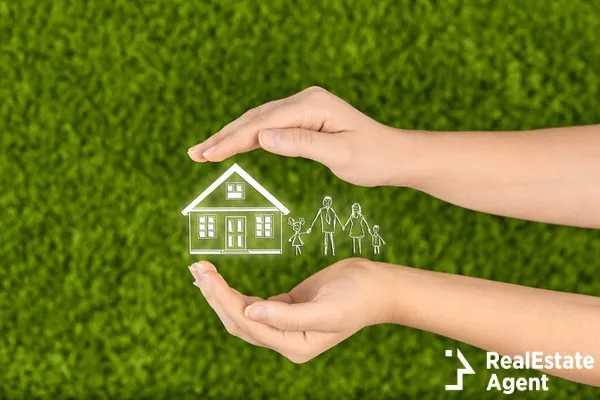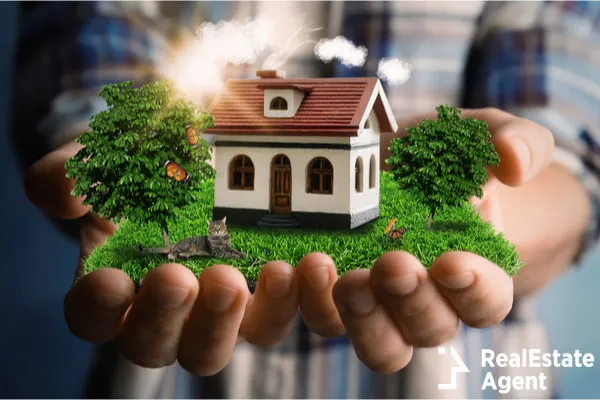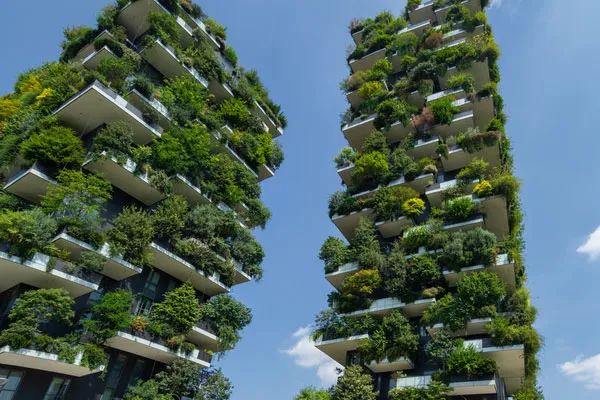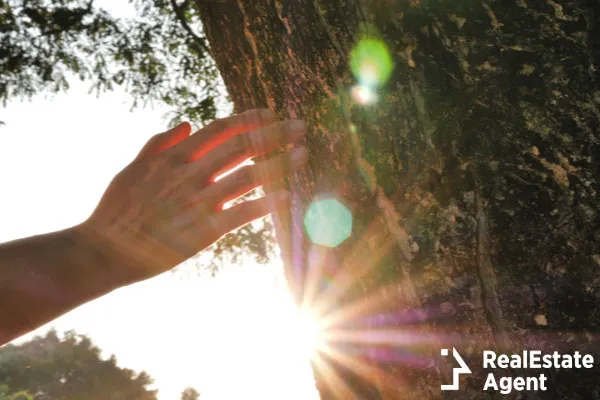
Life in the 21st century is coming with some very welcome changes. Nowadays, it’s becoming more approachable to have a lifestyle that allows you to live more harmoniously with your environment. We're heading towards a much broader path towards sustainability. People are looking into what a sustainable lifestyle would ask of them, and what changes they would have to make. The reason behind this is a growing understanding that this planet is our home, and we should treat it as such.
During 2020 and 2021, we all became aware of the earth-shattering fact that our way of life is damaging our planet. While studies have been around for many decades before, the public noticed the direct impact we were having during this pandemic. Whether it was the pandemic itself, or cities seeing the clear sky for the first time in a long time, it became clear that we can lower the CO2 emissions. Our air can be cleaner and safer to breathe if we just stop relying on pollutants. This conclusion led to a focus on finding and applying alternative solutions in every aspect of our lives. Whether it’s how much food we waste or sustainable ways to build our homes, we look to ways that will decrease our environmental impact. Even the interior design trends of 2022 are following the same pattern. Green, eco-friendly and sustainable seems to be the mantra we’re all discovering.
The same is happening in the real estate industry. Whether it’s living off the grid or finding a 100% sustainable home, homebuyers are becoming more aware of the result of their lifestyles. Many are looking to buy green homes as the push for a more sustainable lifestyle continues. The market can supply the demand, and the demand is growing by the day. Millennials and the younger generations that follow are the most environmentally conscious generations. If a boomer is less excited to hear about passive homes and how the filter systems make it possible to reuse the water already used by the home to lower their carbon footprint, millennials are looking precisely for that. So let’s see how green homes are a highly profitable niche, especially in this day and age.
Think Green

The construction industry started to acknowledge that it carries the weight of between 25% and 40% of the world’s carbon emissions. The construction industry is one of the most polluting industries, easily reaching number one. If we consider the pollution from operating, maintaining, and using these buildings, change was bound to happen sooner or later. After all, we have both harmful and eco-friendly building materials. However, considering the societal and cultural changes, green housing is becoming more appealing. It's moving out from being a niche sector of the housing industry and is moving into mainstream requirements. Individual property buyers and government policies transform the building industry. Selling green homes is transitioning from the luxury sector to the norm.
The National Association of Homebuilders assessed that homebuyers are willing to pay extra for homes with sustainable features implemented. In addition to that, millennials are looking for their first home. This socially and environmentally conscious group is actively seeking sustainable and green features in their homes. The type of car used by realtors can make a difference with them. These and the generations following them make up the biggest renters pool. These features are deal breakers for them that shape the rental market. Caring about carbon footprint and greenhouse emissions is not only changing how we look at homes. We are also building homes differently. We are building them in different areas as well as environmental planning is gaining more interest. We can’t always change a city’s infrastructure, but a home that is close to public transportation will always attract more buyers.
What is a Green Home?
When we talk about green homes, we need to understand that they come in every color. Now, jokes aside, green buildings are designed so that they have a positive impact on the environment or, at the very least, a minimal negative impact. Investors and homeowners can improve their homes and transform them into green buildings. Still, most green homes start with that concept in mind. The threats traditionally built properties pose to our environment are substantial enough to motivate developers to build green.
It is easier for developers to build green homes from scratch than it is to take a traditional home and make it adhere to sustainability standards. There are several green building materials and, depending on the climate, pick the one that fits best. We can make green homes from recycled materials and from torn-down buildings to minimize construction waste. Another way to build green homes is to use locally sourced materials like wood for mass timber. Like this the carbon footprint of the construction process is limited. There are plenty of methods of incorporating water and energy-saving systems. These can be used both in newly constructed buildings and older constructions. Once they are built, true green homes can go through a process to receive the green home certification. This certification follows rigorous building guidelines, and the tests are uncheatable. A home with this certification is green, sustainable, and ideal for every environmentally conscious buyer or renter.
One of the most sustainable green homes is the Glass Dome Eco House located in the Arctic Circle. A home built within a glass dome that sustains its own environment making it incredibly affordable to heat, provide power for, and maintain its function. The home is called Nature Home and a more fitting name couldn’t exist. Inside the dome lives a family of six people, in a three-story, five-bedroom, two-bathroom home. The family actually built the home with their own hands, literally, as the materials are 100% organic. Sand, clay, and water were used to erect the house inside this amazing structure and the glass dome’s shape maintains the heat, working as a greenhouse and protecting from the unforgiving arctic winds and heavy snowfall. Inside the dome, the family has a garden with plums, kiwis, apricots, and cucumbers available year-round. Wastewater is used for the garden and food waste for compost that goes to the garden as well. This home produces zero waste and the water that comes in clean, goes out clean. Who knows what 2022 will bring us, but these domes are pretty amazing.
Things to Know about the Green Homes Real Estate Niche

One of the first things real estate agents learn about the green homes niche is that it is highly profitable. According to a survey conducted by RealEstateExpress[dot]com, the green and eco-friendly properties market is the fourth most profitable niche in the real estate market. Falling close behind short-sales/foreclosures, foreign investments, and luxury properties, green buildings are not only a great thing for the environment but also your pocket. We can finally say that we can get more profit from having an environmentally conscious career than not in this day and age.
Last year, the most prominent earning realtors specialized in was the luxury real estate market and had median earnings of $83,500. Still, those who specialized in green and eco-friendly properties reached median earnings of $75,000. Green living is becoming a way of life that appeals to more and more potential buyers. As a real estate professional, we’re going to give you the tools you need to dive into this niche and thrive in it.
Green Designation for Realtors
If you’re looking to learn more about sustainable living and energy-efficient properties, the National Association of Realtors® (NAR) created a Green Designation for realtors. This course will further your knowledge about market research, marketing tools, what green homes are, and how they can be marketed. The classes can be both online and in the classroom. Once you have finished the course, you are qualified for the Green Designation exam and certification. Still, you will be included in a Green real estate professional Directory, boosting your visibility as a Green real estate advisor.
Green Certified Homes
Going green isn’t only something that an individual can decide. While more and more people are transitioning to a more sustainable lifestyle, this is also a government initiative. While a green home can have various sustainability features, a green-certified home is more than just energy efficient. A house that received the green home certificate includes features that save water, and energy. At the same time, it has an intelligent way of using resources. The site design is also important as the home’s direction can be important for energy efficiency. The indoor air quality and overall environment need to be considered as well as the home's operations and maintenance costs. The U.S. Green Building Council has offered LEED certification since 2007 to set a standard for green residential constructions. These are the homes most environmentally conscious home buyers look for.
The Green Standard
Despite the point we made above, not all green homes get the LEED certification. A unit from a historical building may not meet the stringent requirements. That doesn’t mean it can’t have some sustainable features to attract potential buyers. We have to face the facts and understand that it isn’t sustainable to tear down every building that isn’t 100% sustainable. We can, however, make the ones that we have more eco-friendly and with a lower impact on the environment. Implementing solar panels, renovating by using recycled materials, or installing energy-efficient appliances are all ways to improve a home’s sustainability rating. Real estate agents don’t need a green designation in order to sell these types of properties.
Save the World and your Budget

Investing in green homes isn’t only a financial benefit for the real estate agent. Homebuyers end up saving a lot of money if they purchase eco-friendly homes even if, in some cases, the purchasing cost is higher. These sustainable homes use less electricity and water. This is achieved through energy-efficient appliances and a reduced, or nonexistent heat transfer. This makes them more appealing to buyers once they understand these factors. Green-focused realtors recognized the changing demographics. Environmental awareness is guiding contemporary home buyers. The growing concern for the environment and our ever-dwindling resources is the catalyst that will push green homes into the mainstream market. Once a home buyer moves from a traditional home into a green home, the difference is astounding. As each individual tries to minimize their impact, everyone will feel the difference.
Safety and Tranquility
When a green home is built from the ground up, it follows a certain set of guidelines to receive the green certification. They are built with that goal in mind. However, when an older traditional home is upgraded to meet those standards, its price may increase. That shouldn’t be seen as a drawback. All those updates made the home sustainable and more cost-effective for the potential buyer. Also, those updates are new. When a home is renovated to adhere to energy-efficient guidelines, that means that it didn’t only get a fresh coat of paint. A newly renovated home that received a green certificate is the perfect fit for eco-friendly buyers. Those buyers have safety and environmental concerns that these homes adhere to. It’s about taking something old and making it adhere to the newest and most rigorous standards.
Conclusion
Real estate agents that are focused on green homes can also look into HUD agencies and see what incentives are available for green home buyers. We all know that today’s real estate market, and 2022’s, is a highly competitive industry. We also know that the most significant demographic of real estate buyers is struggling with the current housing prices. Seeing as these buyers are highly motivated to purchase green homes, any incentives that could help them out will be a great bonus.
Understanding these basic elements of the green home market will place you one step ahead of your competition. Consumers from any market are becoming more environmentally aware by the day. Naturally, those statistics also affect the real estate market. Millennials are the first generational wave that is predominantly interested in green homes. After them, Gen Z will be even more assertive regarding what they want, and their voices will be louder than the Millennials. This generational shift is in its early stages. Learning how to satisfy their needs will only benefit you, your business, the industry, the end consumer, but the planet as well. There are really no reasons not to jump into it. This market will only get hotter as it should. The hotter this part of the market will be, the cooler the planet can become.
Let us know in the comments below if you have any other questions about the real estate niche of green homes. Like & Share this article with any environmentally conscious people in the industry. Those less convinced by this sector’s viability could also benefit from this information.
















Have a question or comment?
We're here to help.